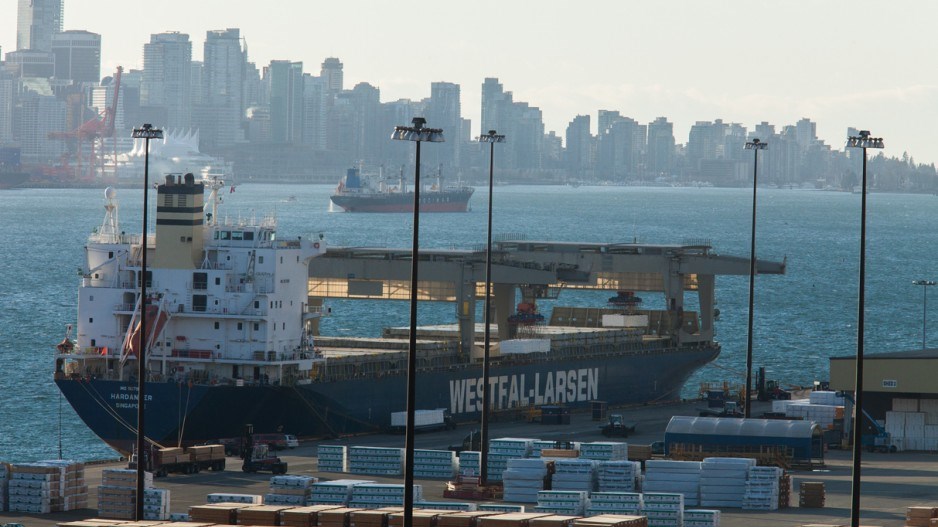Labour issues at American West Coast ports helped bump up the total cargo handled at Port Metro Vancouver (PMV) in 2015’s first half.
The total cargo through PMV was 70.3 million tonnes – up 1.5% over the 69.3 million in the same period last year.
Part of the growth was related to an 8% jump in the number of twenty-foot-equivalent unit (TEU) shipping containers. Between January and June 2015, PMV handled more than 1.5 million TEUs compared with 1.4 million in the 2014’s first six months.
However, the number of empty outbound containers shipped through the port increased 48% to more than 192,000.
“Continued growth in container numbers on the west coast of Canada has been projected for some time, but this higher-than-expected jump is likely due to the impact of U.S. cargo diverted to Vancouver earlier this year in response to labour unrest at U.S. west coast ports and deflated results last year due to the 28-day Vancouver trucking dispute in March 2014,” the port said in an August 18 press release.
Container ports along the U.S. west coast are continuing to recover from the lengthy labour disruptions that stalled container cargo flow through U.S. West Coast ports from mid-2014 through early 2015.
California’s Port of Long Beach reported an 18.4% increase in container traffic in July compared with the same month in 2014.
But West Coast U.S. ports still face increased competition from ports along the Eastern Seaboard, U.S. Gulf coast and in Mexico.
As reported in “Ill will lingers over U.S. longshore labour dispute” (BIV issue 1333; May 19-25), an American Shipper magazine survey found that 40% of respondents are considering East Coast port options because of the economic pain suffered during the protracted port labour negotiations coupled with shippers’ concerns about the long-term reliability of West Coast ports.
According to Won’t Be Fooled Again, How BCOs Plan to Avoid the Pitfalls of West Coast Port Congestion, “roughly half of shippers that already use ports on both coasts say they plan to shift cargo from west to east because of the congestion.”
Meanwhile, a Journal of Commerce (JoC) report earlier this year noted that container traffic at U.S. West Coast ports was down 2% in May from the same time in 2014 but up 30% at the Port of Houston and 25% at Savannah, Georgia. It added that 18 of JoC’s top 40 container carriers moving goods in and out of the U.S. posted volume declines in 2015’s first quarter. More stark comparisons in the JoC numbers included year-to-date container traffic through the Port of Prince Rupert up 43% and down 62% through Portland.
PMV’s overall increase in cargo was driven by a 2.4% rise in export shipments. This was partially offset by a 1.9% drop in imports.
“We are seeing continued growth of trade through Port Metro Vancouver as Canadian demand for foreign products and international demand for Canadian resources continue to increase,” said PMV president and CEO Robin Silvester.
“Our status as North America’s most diversified port is significant as overall cargo grew in the first half of 2015 despite some softening markets and global economic uncertainty.”
PMV saw an 8.9% rise in the shipment of bulk grain, specialty crops and feed, from 11.3 million tonnes in the first six months of 2014 to 12.3 million this year. Fertilizer shipments increased 18.2% to more than six million metric tonnes.
Chemicals, basic metals and minerals tonnage dropped 13% and coal shipments fell 2.2%.
PMV also forecast a strong 2015 cruise season, which will see levels consistent with previous years. Approximately 805,000 passengers are expected on 228 separate vessel shipment.
With files from Timothy Renshaw




